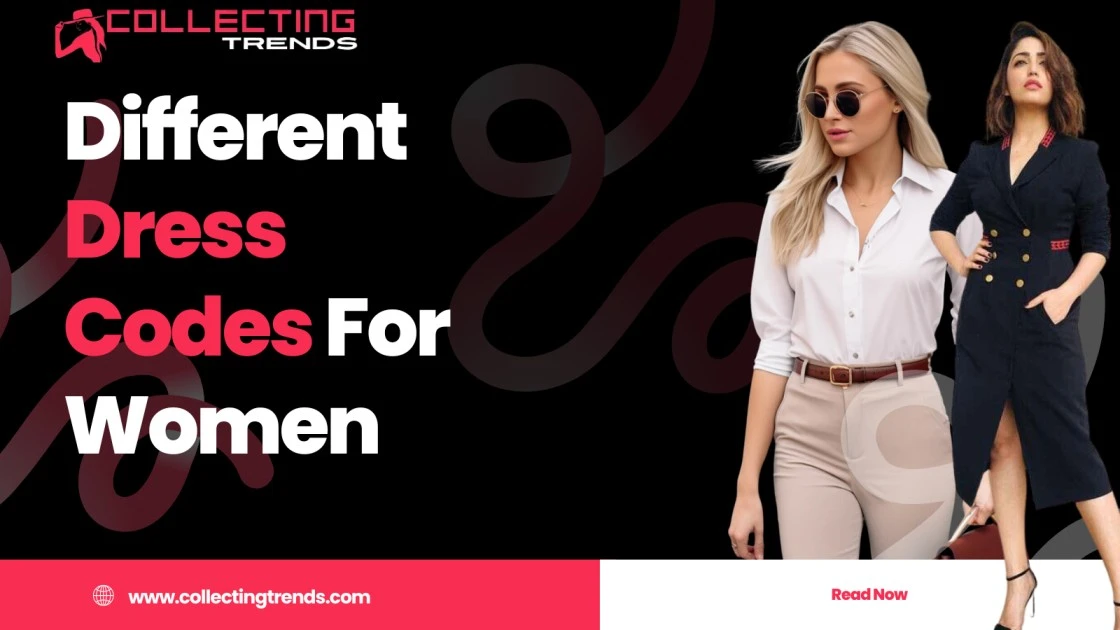Have you ever received an invitation to an event, looked at the dress code, and wondered what to wear to dress appropriately? You are not alone. we can all do it!. We have brought for you Different Dress Codes for Women.
Traditional dress codes change over time, but staying classic is easier than most people think. Choosing clothes that match the dress code is easy if you follow a few simple guidelines.
5 MOST COMMON DRESS CODES
Although today it is not unusual to dress like Barnyard Chic or Beach Formal (both current codes for the wedding you are invited to), the most common dress code is:
- Casual
- Smart Casual
- Business Casual
- Semi-Formal
- Formal
Casual Dress Code
This may be more familiar to you. This means you can wear casual and comfortable clothes. Although most people consider almost everything to be "casual", there are some guidelines you should follow to determine what is casual and what is appropriate. For example, avoid very short shorts or skirts (anything that might reveal your bottom is a definite no-no) and very low-cut tops. It's best to avoid anything you actually use during exercise.
Smart casual dress code
This is the hardest to determine because it means you can still wear casual clothes. because it looks clean and put together. This is the general dress code for creative or technical workplaces. It is best to wear clean, wrinkle-free clothes in good condition (this also applies to shoes). If you want to be safe, avoid shorts, mini skirts, and sandals, but if you want to look stylish, you can.
Business Casual
The goal is to deviate from normal business attire (skirt or pant suit) while creating a "professional look" effect. . The beauty of casual dressing is that you can express your sense of style with accessories and jewelry. Tights with a nice blouse are fine; flat shoes are fine; simple monochromatic dresses are recommended. Make sure you dress appropriately, as this will make you look more professional.
Semi-formal dress code, also known as cocktail dress
This is a great opportunity to wear your little black dress, if you have one. Formal attire (a formal blouse with a skirt or trousers) is also generally accepted, unless the dress code states otherwise. Mid-length or knee-length dresses are common.
Formal dress code, also known as black tie
This dress code requires long dresses for all women, although traditionally hair was needed flat in the pot, but the trend seems to be moving away from it. You can curl your hair, as long as it looks neat. It's also a good time to show off your best jewellery, and small clutches are typical.
What to do if the dress code is unclear
If you are invited to an event that does not have a clear dress code, the best way to dress appropriately is to ask the host what you are going to wear and then choose something that matches your outfit. As much as possible. You can't go wrong with matching your host, and when in doubt, dress up, not casual! Also checkout 8 Stunning Outfits for Women Ideas.
Frequently Asked Questions: Different Dress Codes for Women
Have you ever gotten an invitation with a dress code and had no idea what to wear? Relax, you're not the only one! We've got you covered: here are some common dress codes for women so that you can be prepared for any event!
1. Casual:
- What this is? Everyday clothes and a comfortable, casual feeling. Think about jeans, sneakers, t-shirts, sundresses, and shorts if you want to feel at ease.
- Key aspects: In this case, comfort rules the kingdom. Choose clothes made of breathable materials such as cotton or linen.
- Examples: Grocery shopping, catching up with friends over coffee, and brunch over weekends.
2. Smart Casual:
- What is it? Think of it as semi-formal mode of dress. It aims to look carefully groomed but also make it seem like one can still be approached.
- Key elements: The concept we would like to define here is most likely to do with polished simple pieces. Blue jeans[are acceptable] (dark wash, no rips), blouses, skirts, [or] dresses, to wear in combination with loafers as well as flats.
- Examples: Settings in which it is appropriate to wear such again style, for example, working place that is
3. Business Casual:
- What is it? The dress code here refers to the majority of the affordable dress codes of most professions. It is professional and comfortable, and that is why the staff can do their task well.
- Key elements: Trouser suits or dresses̀ together with a skirt styled under a blazer, blouses, and shoes of the closed type such as pumps or flats.
- Examples: Offices, business dialogs, customer presentations.
4. Semi-Formal:
- What is it? This is a dressier option suitable for evening events or the like. It's not quite as formal as formal attire or as casual as cocktail attire.
- Cocktail Dresses: one-off block party tops or trousers or pants with a trendy and chic look, lovely pantsuits, and eye-catching high or wedge heels are the key items.
- Examples: involve cocktail soirees, weddings (if the location is chic), and upscale dinners.
5. Formal Dress
- What is it? Formal dress code is the height of formality for instance, black-tie events, galas, or very formal occasions
- Key elements: Gowns, elegant cocktails, tuxedos with some women, and formal shoes like heels or dressy flats are all included among the selections available.
- Examples: Black-tie galas, weddings (depending on the venue), award ceremonies.

